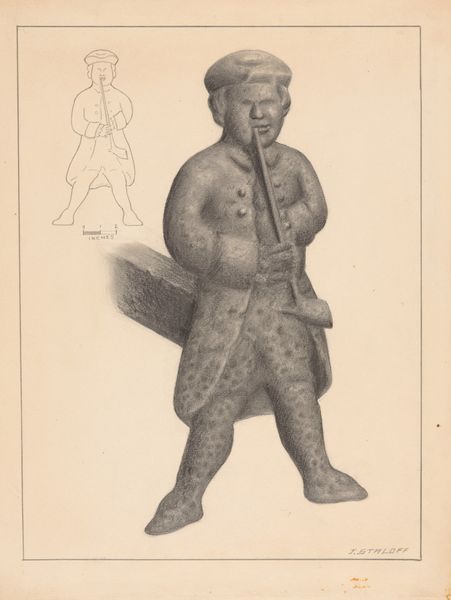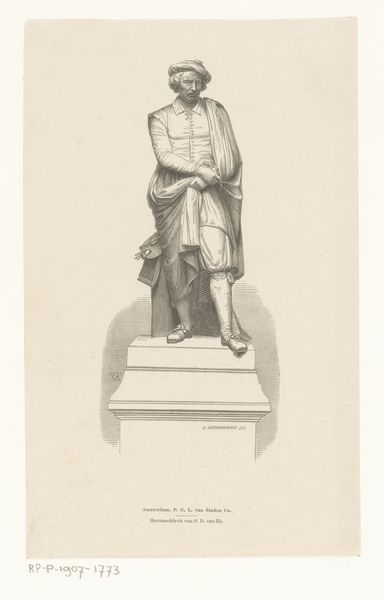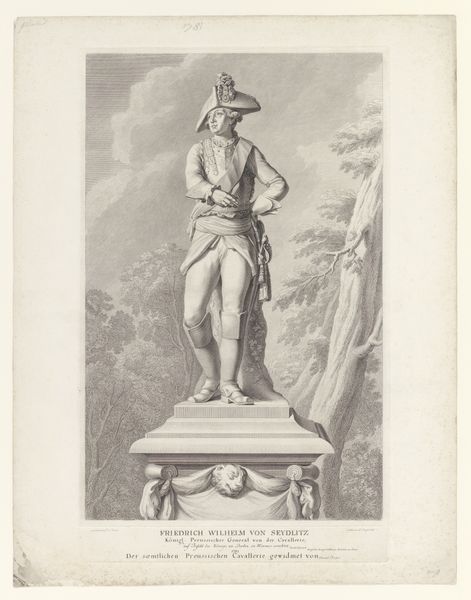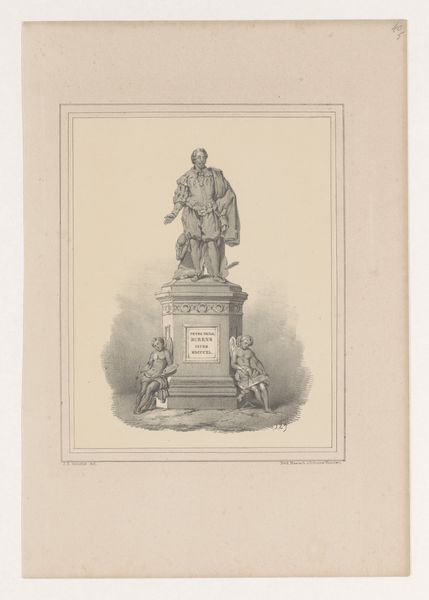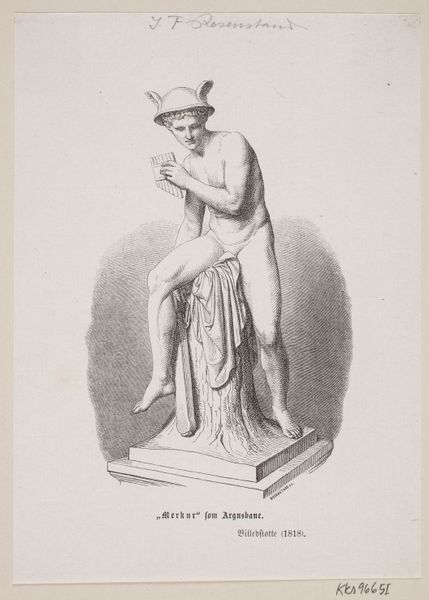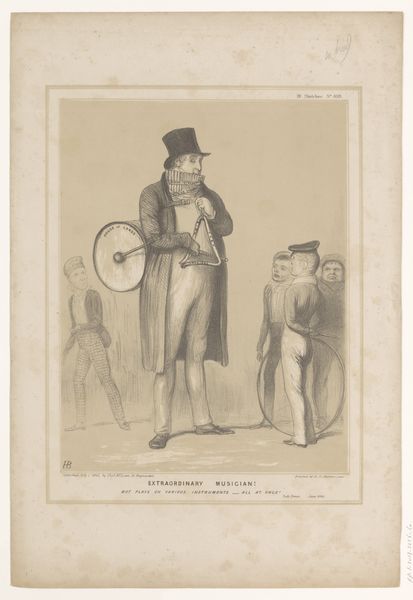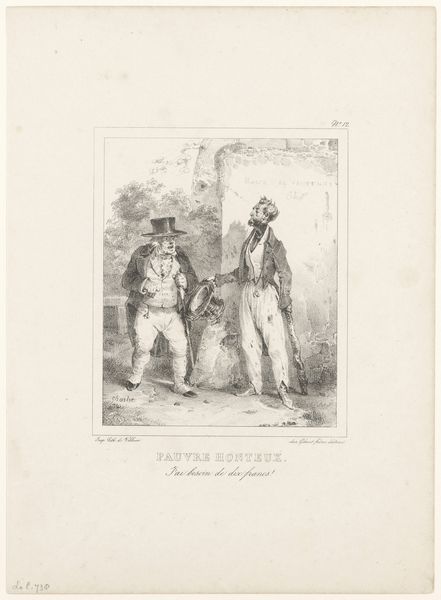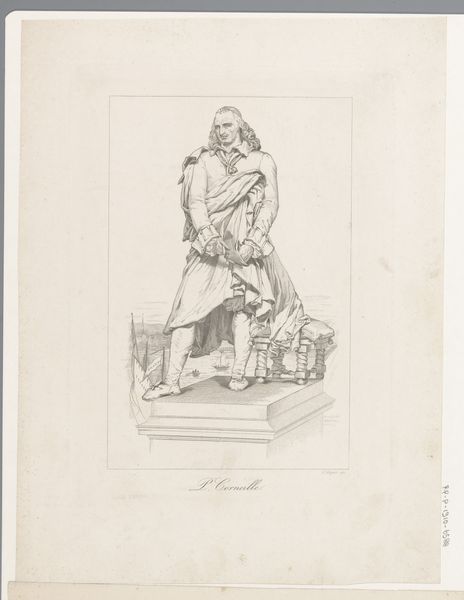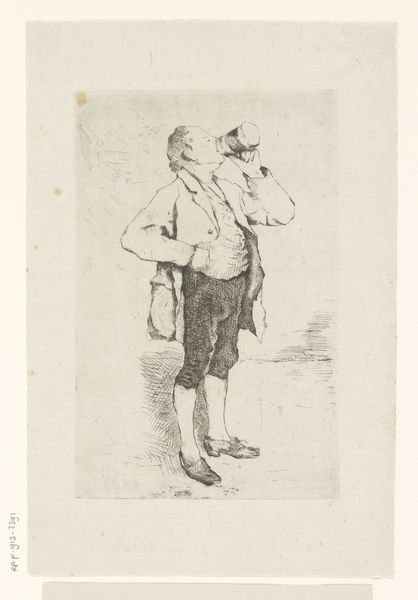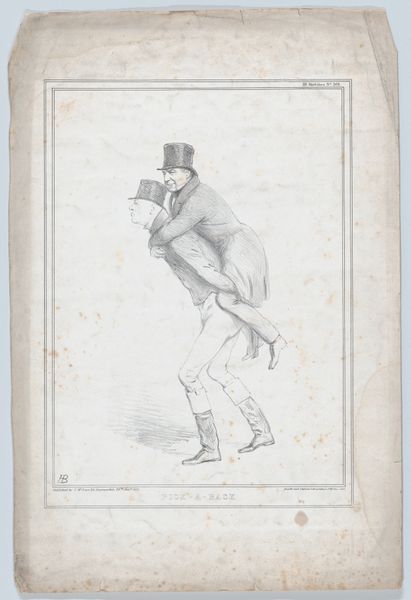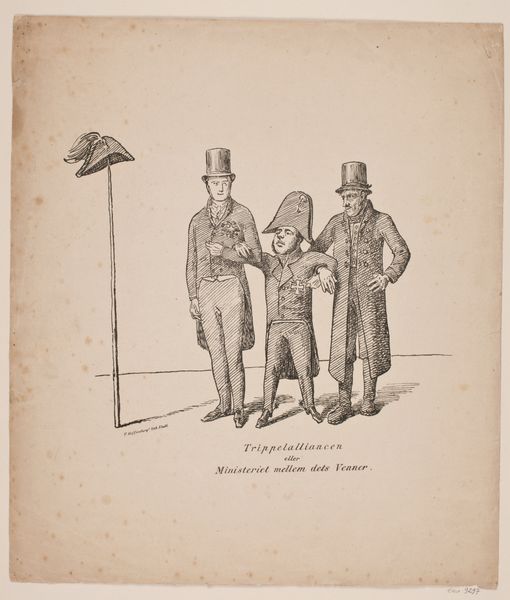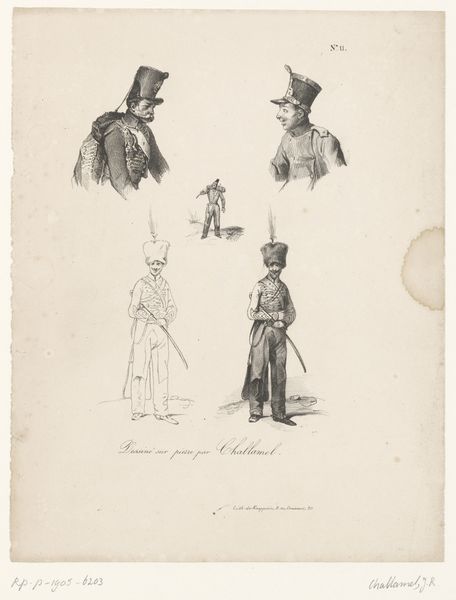
Standbeelden van Napoleon Bonaparte en Louis-Napoléon Bonaparte 1842 - 1887
0:00
0:00
Dimensions: height 250 mm, width 170 mm
Copyright: Rijks Museum: Open Domain
Curator: This engraving by Carel Christiaan Antony Last, titled "Statues of Napoleon Bonaparte and Louis-Napoleon Bonaparte," dates between 1842 and 1887. It's currently held in the Rijksmuseum. Editor: Immediately, what strikes me is the sharp contrast. The one on the left has a density and darkness, while the figure to the right feels so airy and light. It's like a visual study in opposing forces, both in form and tone. Curator: The contrast isn't just visual; it's also symbolic. The darker figure of Napoleon is labeled as "The man of bronze", an epithet suggesting strength, permanence, the "original". While Louis-Napoleon, in lighter tones, is presented as "The man of plaster". It implies he's an imitation, less enduring perhaps. This print cleverly asks us to contemplate their legacies. Editor: And the poses! Napoleon exudes a controlled power, hand tucked into his jacket, stance measured. Louis-Napoleon is much more relaxed, almost flamboyant. Visually, Last sets them up as two different species of leader. The stark difference in pedestal designs contributes as well. The statue of Napoleon is raised atop an ornate design, while Louis Napoleon’s base appears far simpler. Curator: Precisely! Napoleon is staged on a decorative pillar inscribed with his triumphant victories, referencing Aüsterlitz and Marengo. The symbolism speaks to his military achievements. It is a fascinating exploration of how power is represented and how that representation is consciously framed within a specific cultural context. Louis-Napoleon stands on a simple base inscribed with Strasbourg and Bologne, referencing less historically triumphant achievements by comparison. Editor: This deliberate staging tells us a great deal about the artist's view. Considering Last was working during a period of immense political and social change, how might the print’s commentary on leadership influenced or challenged prevailing notions of authority? Is there perhaps a critical message embedded here about the authenticity and durability of power? Curator: That’s it precisely; it serves as a meditation on the nature of leadership, the weight of history, and how later figures are invariably judged against the backdrop of their predecessors. It encapsulates a moment of looking back, taking measure, and questioning what defines lasting influence. Editor: I find myself more intrigued now by its stark juxtapositions. It prompts us to dissect not only what we see but also what we think we know about these historical figures. Curator: A concise yet poignant reflection, indeed!
Comments
No comments
Be the first to comment and join the conversation on the ultimate creative platform.
